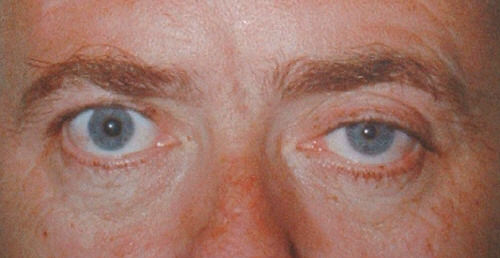| Anisocoria
Definition
Having one pupil larger than another pupil. Can be a sign
of a life
threatening emergency.
Differentials
Anisocoria greater in Bright Light
Perform: Instill .125% pilocarpine
If constricts -> Adie's tonic pupil
If not, insert 1% pilocarpine
If constricts -> IIIrd nerve palsy (emergency)
If not -> pharm dilated.
Anisocoria greater in Dim Light (if associated with ptosis and possible
anhydrosis)
If Congenital, then is ok -> ask if been there long time
If not, then it is acquired -> possible Horner's
Perform CT of
Chest/Head/Neck for Breast Cancer,
Pancoast Tumor,
etc.
Treatment
CN III palsy - Anisecoria greater in bright light. If painful,
may be an aneurysm - EMERGENCY. ER
Referral. STAT MRA/Angiogram
Horner's Syndrome - Anisecoria greater in dim light. If painful,
may be a carotid artery dissection - EMERGENCY.
ER Referral. STAT Carotid Doppler
Tonic Pupil - Anisecoria that
alternates, with one eye bigger in dim illumination and the other eye
bigger in bright illumination.
Physiologic - Anisecoria equal in bright and dim illumination. 20%
of population have this benign condition.
Transient Anisecoria - Comes and goes. Sometimes
related to migraines.
Mechanical - Associated with past trauma that creates inability of
sphincter or dilator to work. Can be caused by a uveitis/posterior
synechia.
Pharmacological - Recent onset with both pupils still reactive to light.
Sometimes a side effect of anti-depressants or motion sickness patches.
Analysis
Perform test of EOMs
Measure pupils in bright and dim illumination
Workup
CT/MRI/MRA/angiography (Painful CN III palsy or painful Horner's)
Tonic pupil - find underlying cause
Physiological - no treament necessary
Pharmacological - ensure patient's dosage is not too high. Consult
with prescribing physican
If all tests are negative, the condition is called Adie's Tonic
Pupil.
No treatment necessary
|





